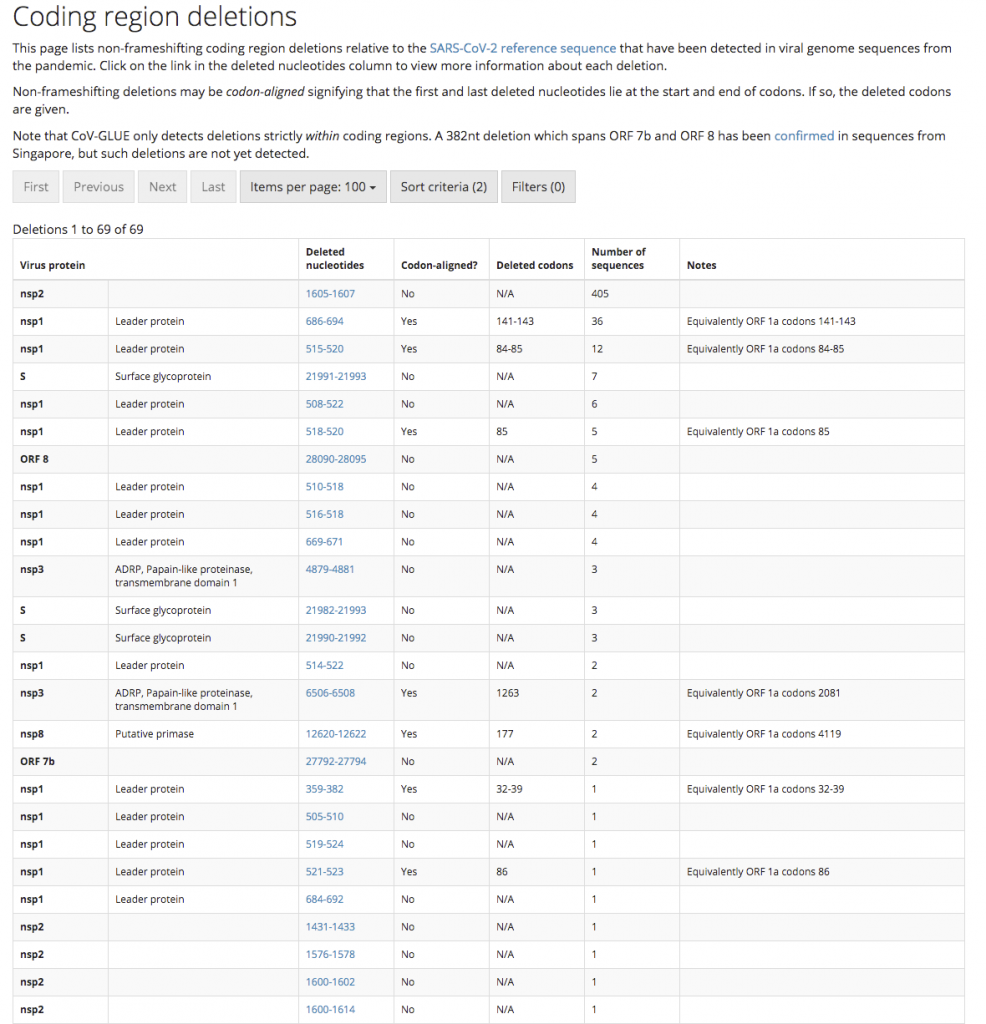In my first post on a possible solution to COVID-19 I hypothesised that there would be gene deletion mutants to be found in the SARS-CoV-2 viral strains out in the world and that we would find them if we looked.
Unfortunately, when I posted there were very few full genome sequences in the public databases (under 1000) and many of these sequences were of low quality and contained gaps due to poor sequencing coverage. These gaps look like gene deletions when you try to do bioinformatic analysis.
Since then the COVID-19 Genomics UK Consortium (COG-UK) has released 10,567 complete SARS-CoV-2 genome sequences. Bioinformatic analysis of this data has revealed 69 of these genome sequences contained gene deletions. The full list can be found here, but here is a partial list.
The really interesting deletion mutations are those in the non-structural accessory genes. These are the genes that are likely to play an important role in pathogenicity and it would be expected that some of these mutations may make the virus less dangerous (attenuated).
The next step (beyond obtaining more sequences from locations other than the UK) is to go and visit the people who were infected with each of the different deletion strains and investigate what was their clinical outcome. If the patient only had a mild case of COVID-19 then we have a potential attenuated strain and we need to look for more cases caused by this mutant strain in the local area (including in the hospitals).
If we find that everyone who was infected with a particular deletion strain only had a mild case of COVID-19, then we have our candidate attenuated strain which could be used to accelerate vaccine development in a challenge trial. Finding such an attenuated strain should allow us to shave many months off the development of an effective vaccine that will protect us from this terrible pandemic. The value of this in both lives and dollars saved is immense.
